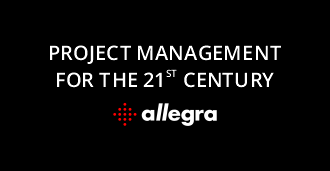What Every Project Manager Should Know About Dependencies
Overview
In the world of project management, each new project comes with its own set of dependencies and constraints that influence how tasks are going to be managed and scheduled.
Simply put, dependencies help you determine the sequence in which project tasks have to be performed. If managed effectively, you can prevent bottlenecks, mitigate unforeseen delays, and deliver the project according to plan.
In this article, we will take a closer look at what dependencies are, the main types of dependencies you can encounter, and how to deal with them successfully.
What are project dependencies?
Dependencies are relationships between two project tasks or activities, where the completion of one task depends on the completion of another. Generally, dependencies affect how project managers schedule tasks.
Here’s an easy real-world example that will help you better understand how dependencies work:
Let’s imagine you’ve just started a new project.
Before you can go ahead and assign each team member their tasks, you have to create a project plan.
That means you need to break the project work into smaller activities, establish their order and then identify the resources required to complete them.
In other words, assigning tasks to the team depends on you having a project plan in the first place.
What are the main types of dependencies in project management?

To build a feasible project schedule, you need to understand the different types of dependencies you can come across when managing a project. There are several ways to classify dependencies.
In the first place, based on the level of control, you can have the following two types of dependencies:
-
Internal dependencies
These tasks are dependent on other tasks within the project and are within the control of the project management team.
-
External dependencies
These tasks are dependent on third parties for completion and are outside the control of the internal project management team, representing a high risk for the project delivery.
Then, based on task relationships, there are four types of dependencies:
-
Finish to start (FS)
This is the most common dependency in project management, where the successor task cannot start unless the predecessor is finished. For example, if you’re organizing an event, you can’t send the invitations unless you set a date and booked a venue.
-
Start to finish (SF)
This a rarely used type of dependency, where the successor task can’t finish unless the predecessor task starts. For instance, if you’re working in shifts at a grocery store, you can’t finish work and go home unless your colleague covering the next shift arrives and takes over.
-
Finish to finish (FF)
This type of dependency happens when the successor task can’t finish unless the preceding one has finished. For example, you can’t complete your project report if you haven’t finished analyzing all the data you’ve gathered.
-
Start to start (SS)
This last dependency means that the successor task can begin only after the predecessor task has also started. For instance, if you’re preparing a dinner table for your guests, you can begin preparing the side dish as soon as you’ve put the main course in the oven to cook.
Last but not least, based on project conditions, you can encounter the following categories of dependencies:
-
Logical dependencies
These dependencies are inherent to the nature of the tasks and activities involved within a project and cannot be avoided. So, for example, you can’t launch a social media advertising campaign for your business without creating the visuals and copy for the ads.
-
Resource-based dependencies
Resource-based dependencies are determined by project constraints. For instance, if you’re planning to rebrand your website, but you only afford to work with a freelancer instead of an agency, tasks will be completed sequentially since there’s only one person doing everything.
-
Preferential dependencies
These dependencies aren’t mandatory like the logical ones, but you can include them in the project schedule to increase the quality of the deliverables. For example, it may be best practice to proofread an article two times before publishing it on your website, although technically, one in-depth proofread should be more than enough.
Why is managing dependencies important?
Due to their nature, dependencies tend to create bottlenecks and introduce additional risk to your projects.
However, if you identify and manage them efficiently, you can lower project risk, better allocate resources and deliver your project on time and within budget.
Most often than not, you might find yourself waiting on other people within the project team to finish their tasks in order to move to the next phase. But that’s nothing compared to having to handle delays coming from external parties involved in your project.
And as much you might try to perform multiple tasks in parallel and speed up project delivery, your constraints will only let you go so far.
Before delving further into dependencies and their role, here’s a short note on constraints. Constraints are limits within which project tasks have to be completed, the most common ones being scope, time, and budget. Sometimes constraints might give rise to dependencies and dependencies might lead to constraints, but they’re completely different things.
Now coming back to dependency management, understanding the relationships between project tasks is crucial to accurately estimate your project’s duration. Especially when we talk about tasks on the critical path.
To give you a short recap, the critical path is the longest chain of dependent activities that need to be completed to deliver the project successfully. If an activity on the critical path gets delayed, the whole project will get delayed unless others tasks on the path are finished earlier.
That’s why identifying dependencies between tasks on the critical path can help you prioritize which activities to keep a close eye on and have a backup plan in case things go south.
Moreover, having a clear understanding of the tasks’ order and their estimated duration makes it easier to allocate resources where they’re most needed.
How to manage project dependencies like a PRO

Since we’ve already covered the main types of dependencies you can encounter and why it’s crucial to keep track of them, let’s move on to the next step: managing project dependencies.
1. Identify dependencies and constraints within your project
You can do this on your own or organize a quick brainstorming session with your team to speed up the process. This step helps you get a comprehensive view of how tasks relate to one another and what constraints impact your project delivery before you start scheduling your project activities.
After you’ve finished identifying your project’s main dependencies and constraints, make sure to add them to your project charter so that all key stakeholders stay on the same page. Don’t forget to list external dependencies in the project risk register as they pose the highest risk to your project.
2. Use the critical path method to create your project schedule
Once you calculate the critical path, you can see what critical tasks and dependencies you need to prioritize to deliver your project on time.
To highlight the critical path of your project, you first have to create a Gantt chart diagram. This chart provides you with an overview of project tasks and dependencies, task owners, start and end dates, milestones, deadlines, and, most importantly, progress.
Using a project management tool such as Allegra can help you visualize your tasks and dependencies in a Gantt chart view and effortlessly determine the critical path.
3. Keep relevant stakeholders informed and updated
Knowing what major dependencies influence project delivery helps key stakeholders form realistic expectations of project workflow and duration.
To present the latest updates in an easy-to-understand format for both executives and clients, you can use a Gantt chart. This way, your audience will see how project tasks relate to one another while reviewing current progress.
4. Have contingency plans prepared just in case
Sometimes things don’t go as planned. That’s why it’s essential to have a plan B ready to ensure that your project stays on the right track and you meet initially set deadlines.
One effective strategy for minimizing the impact of dependencies on the overall project schedule is to create buffers. In short, inserting a buffer—be it time, budget, or resource-related—into your project plan ensures that even if a critical task gets delayed, you can make up for it without too much difficulty.
Final thoughts
Dependencies are an inevitable part of project management. Not to mention, they have a great impact on the success of your projects.
The key to managing them effectively and meeting deadlines is having a project management tool in place to automate your efforts and make your life easier.
Allegra is a fully comprehensive solution that can help you plan, organize, and track every aspect of your project in real-time. You can effortlessly create interactive Gantt charts that help you map hierarchical projects, visualize dependencies and determine the critical path.
Moreover, the tool features advanced scheduling functionalities that allow you to make quick changes within your project timeline while automatically rescheduling all dependent tasks or activities.
Start your 30-day trial today and turn managing dependencies into a stress-free experience.




